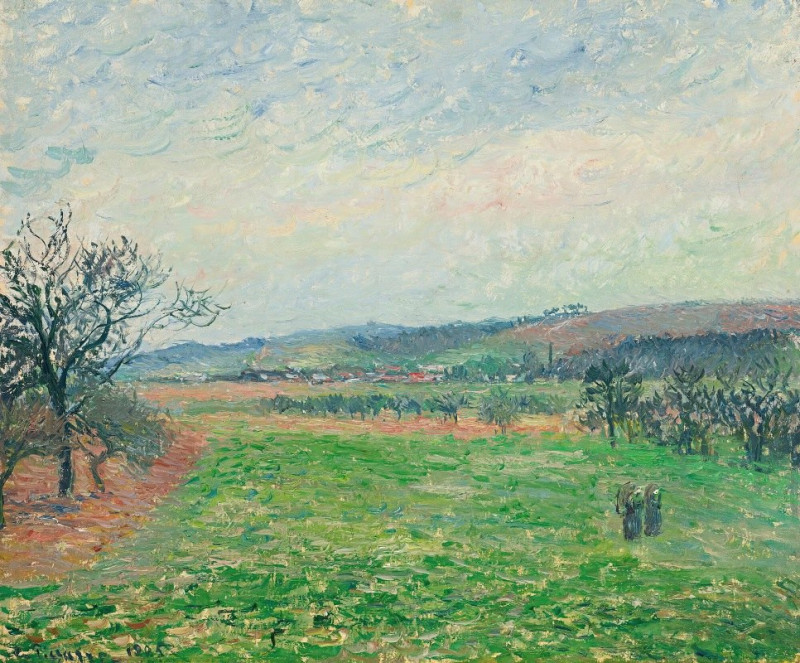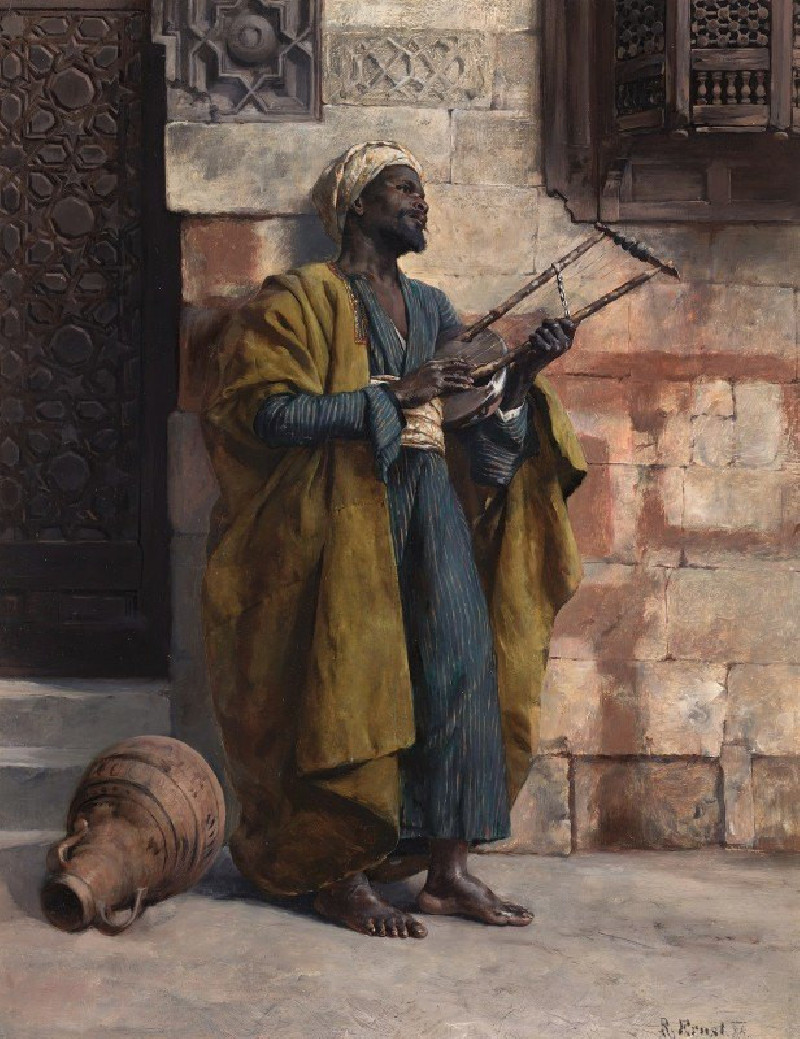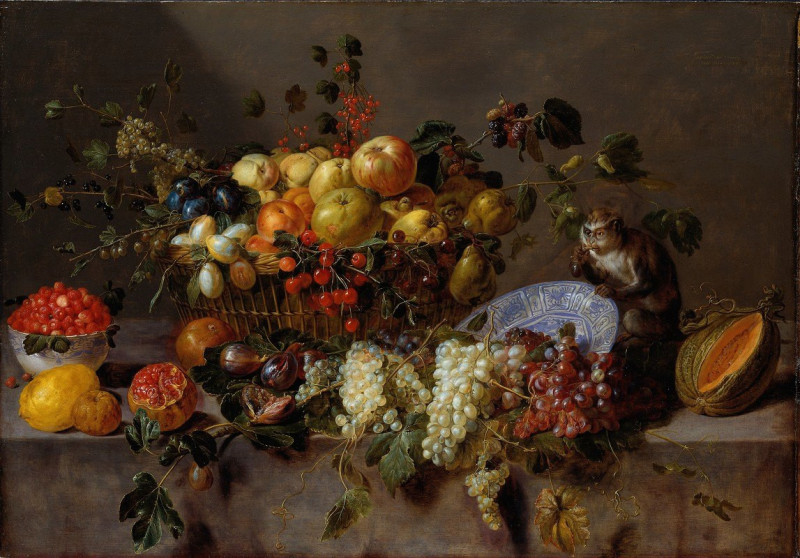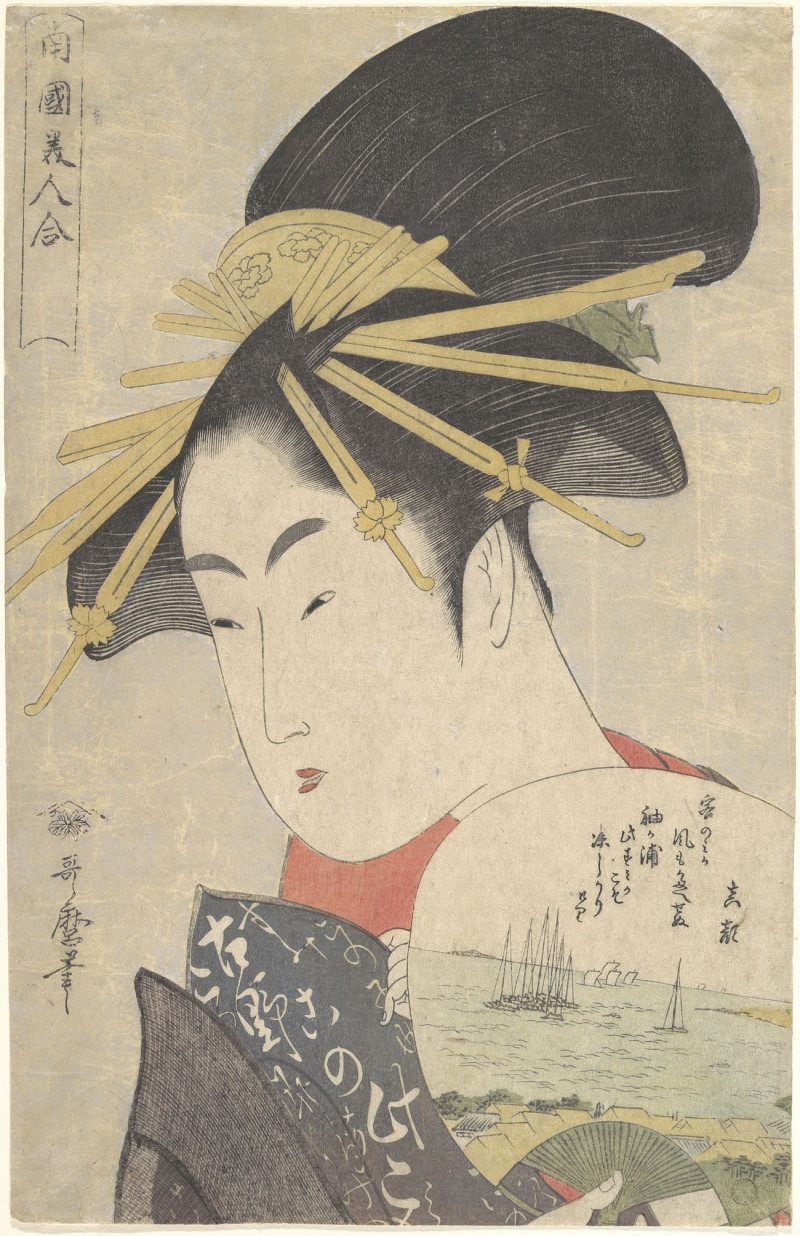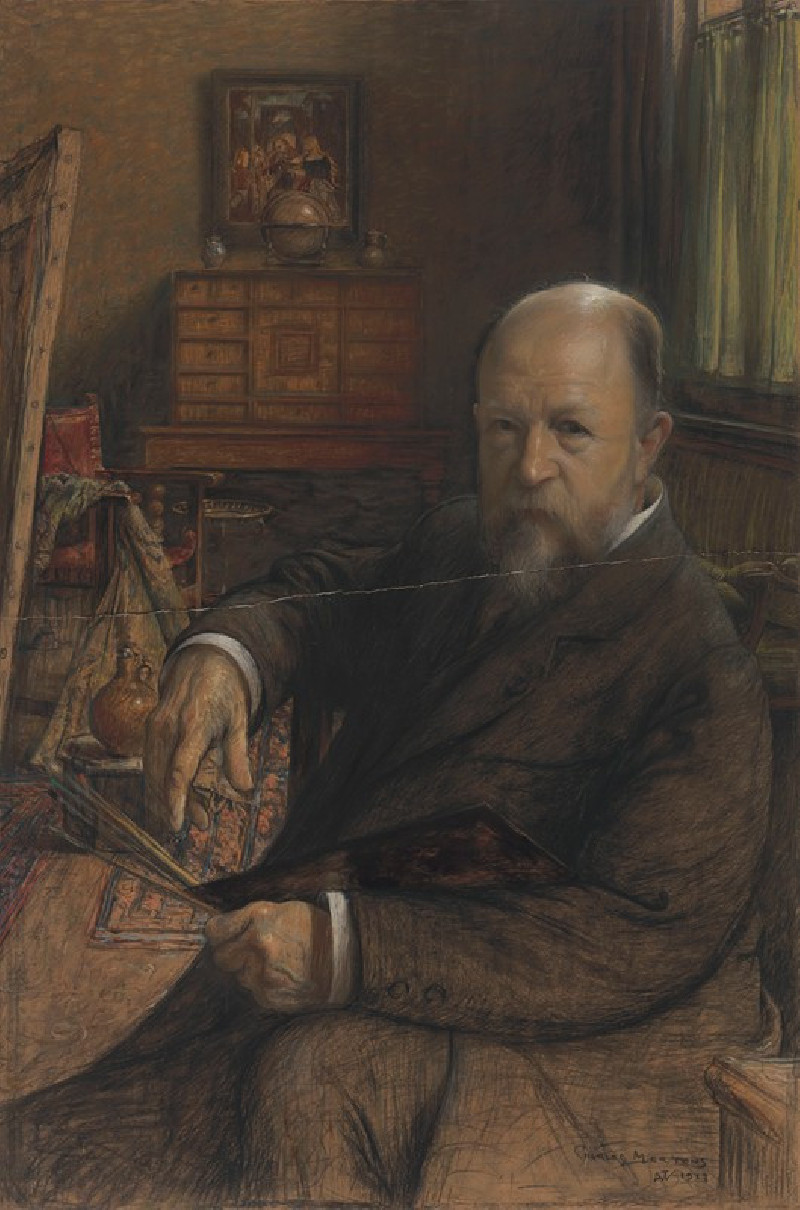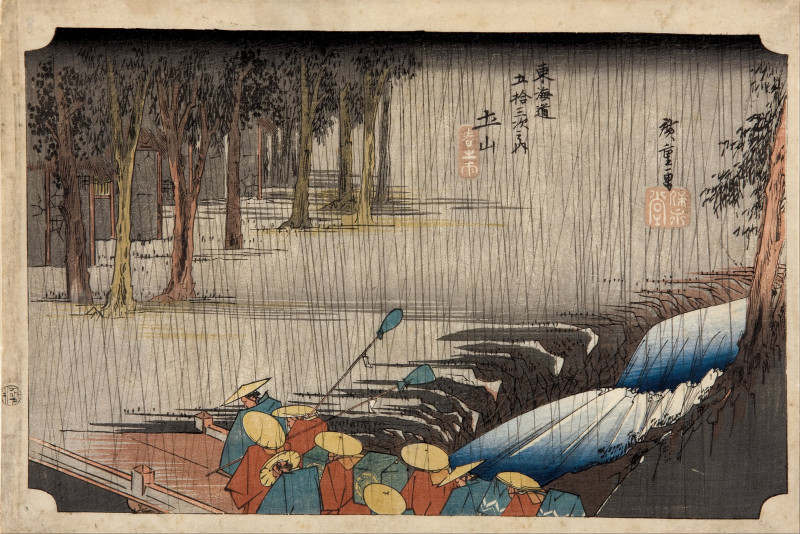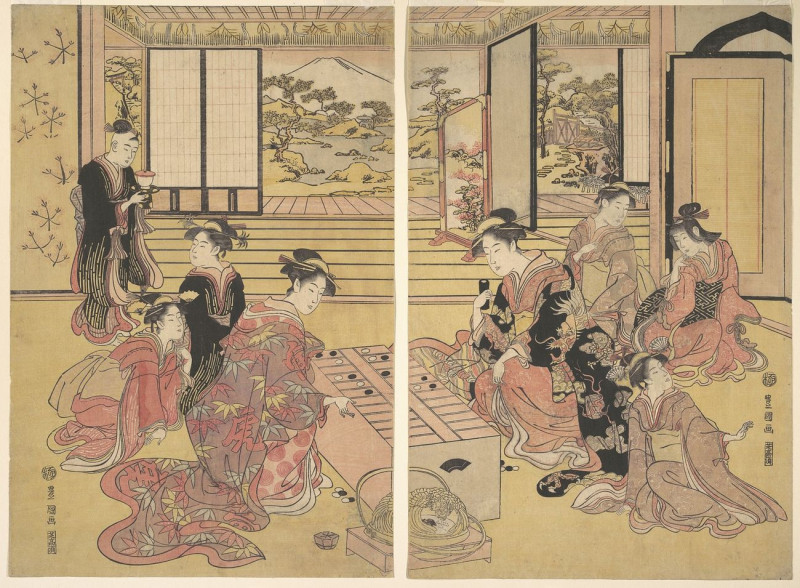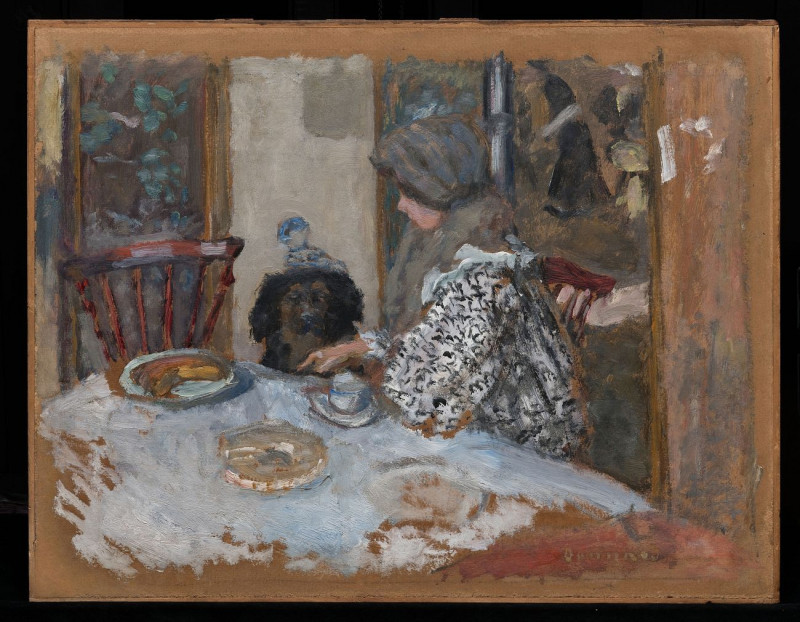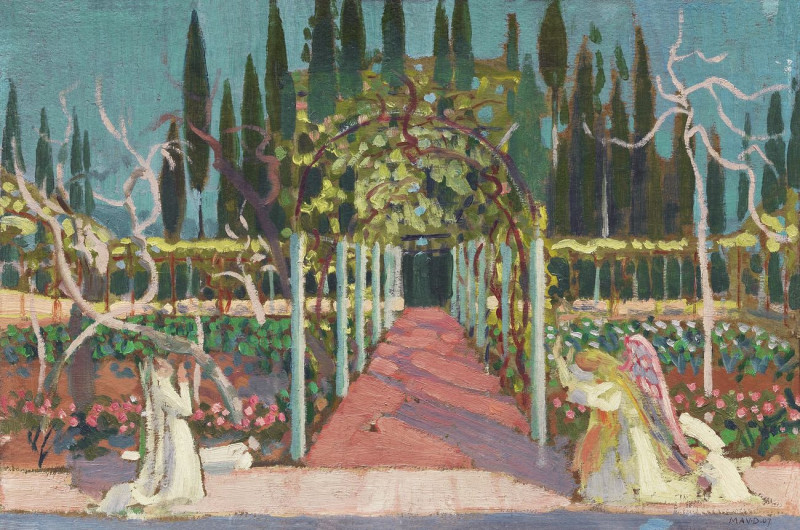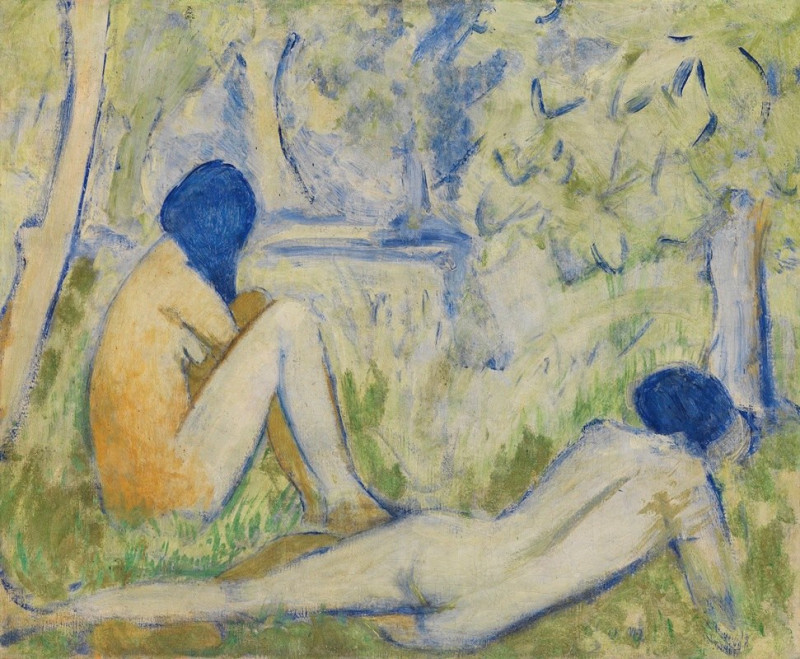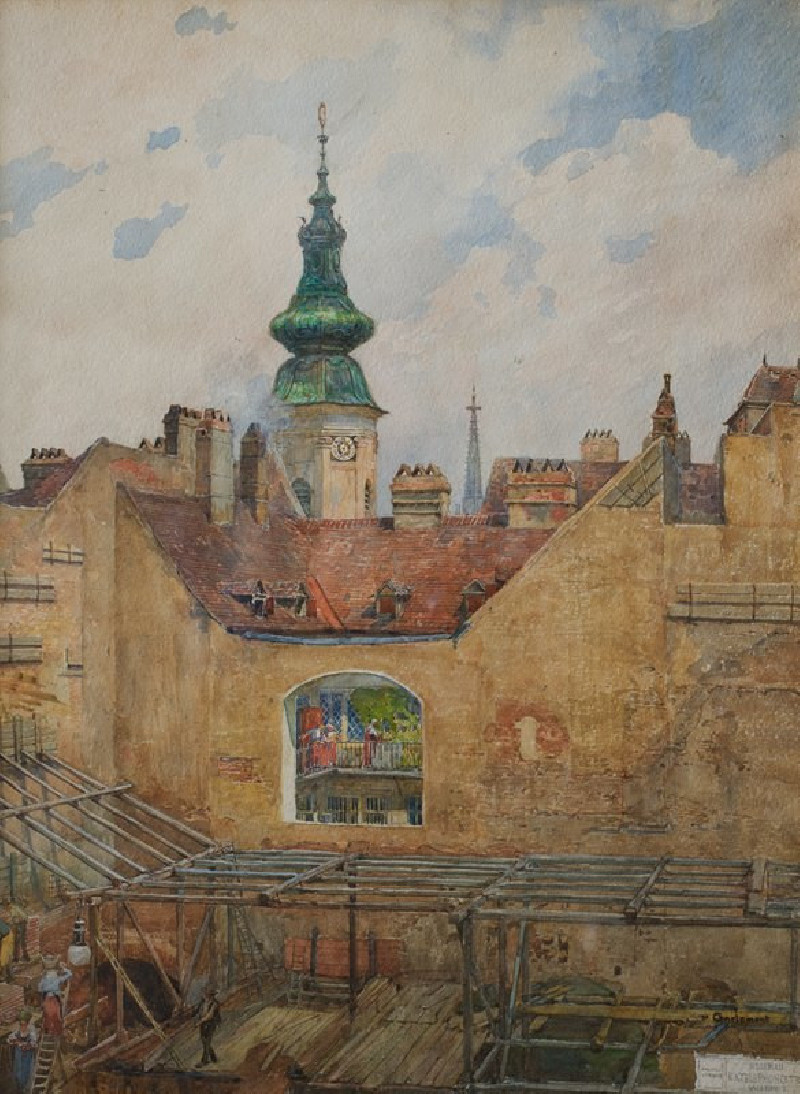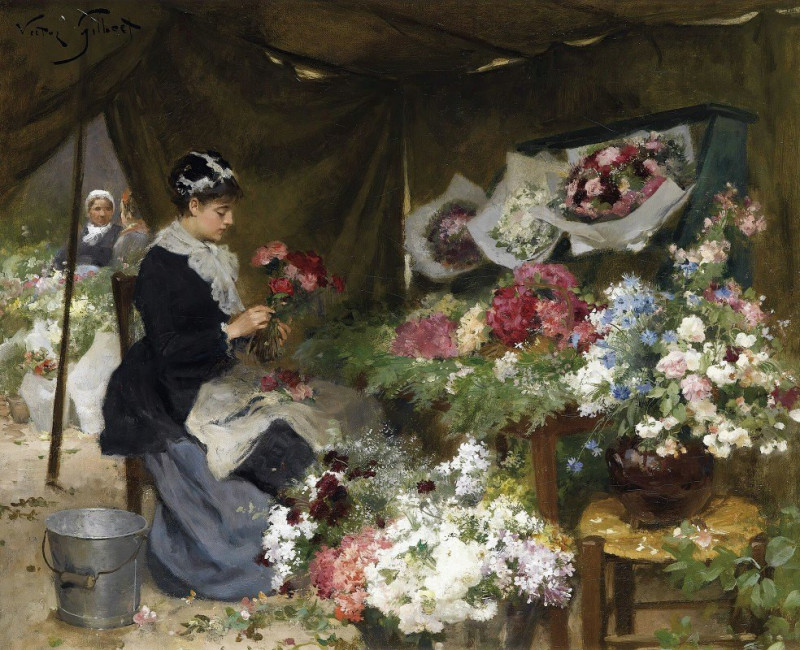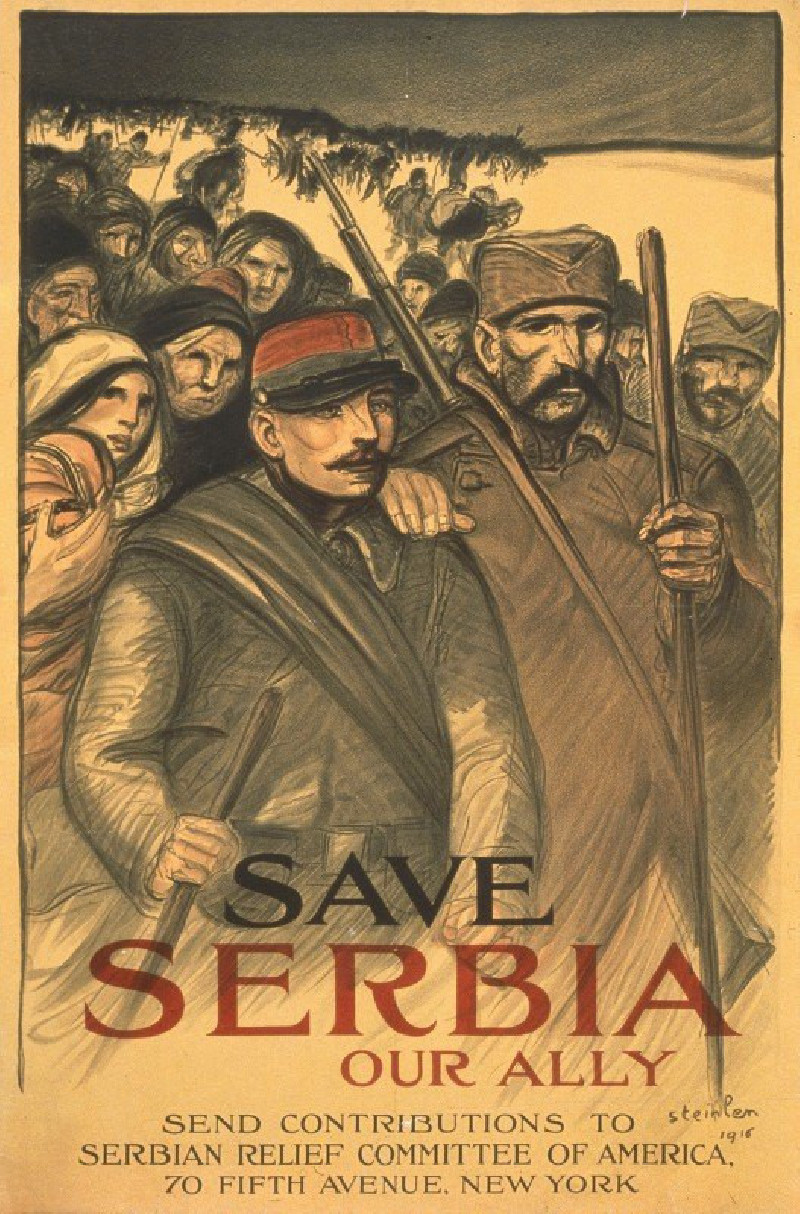Les Coteaux De Gisors, Temps Gris (1885)
Technique: Giclée quality print
Recommended by our customers
More about this artwork
In "Les Coteaux De Gisors, Temps Gris," Camille Pissarro, a master of Impressionism, captures the tranquil essence of the French countryside under a subdued, overcast sky. This 1885 masterpiece illustrates Pissarro's exceptional ability to convey atmosphere and mood through his distinctive brushwork and color palette.The painting presents a wide-open landscape, its foreground dominated by a lush green field, dotted here and there with touches of red and earthy brown, suggesting the agricultural vibrancy of the area. The middle ground gently rises into softly rolling hills adorned with clusters of trees, beyond which lie small village houses, their red roofs peeking through the greenery and adding a splash of color that draws the eye.Notably, a large, leafless tree anchors the composition on the left, its twisted branches reaching skyward and providing a stark contrast to the otherwise muted tones of the palette. This element not only serves as a natural frame for the scene but also emphasizes the season or the weather’s impact on nature.The sky, a canvas within a canvas, is a swirl of grays and blues with hints of peach and white, reflecting the variability of the Northern French climate. Pissarro's technique here is loose and flowing, with the brushstrokes creating a dynamic texture that mimics the shifting clouds.Overall, Pissarro's "Les Coteaux De Gisors, Temps Gris" invites viewers into a serene, almost timeless space. It is a testament to the artist's lifelong fascination with the natural world and his commitment to portraying it with honesty and sensitivity.
Delivery
Returns
Blessed are they who see beautiful things in humble places where other people see nothing. — Camille Pissarro
Camille Pissarro (1830-1903) was born on St.Thomas (now the US Virgin Islands) to a Portuguese father and a Dominican mother. He went to Paris to study art at Ecole des Beaux-Arts. He was an early pioneer of pointillism and neo-impressionism and later became a mentor of many famous impressionist painters including Cezanne, Manet, Renoir, and Gauguin. His paintings depicted rural and urban French landscapes and lifestyle. Many of his works politically captured images of peasants and laborers. Today, he is considered the father of impressionism.

